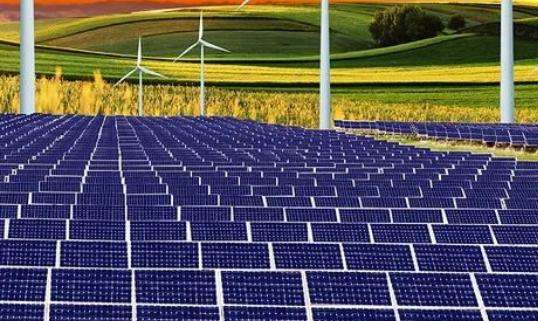The amount of electrical energy generated by each rotation of a wind power generator is also different. For example, the most common 2MW direct drive wind power generator can produce 2000 electrical energy every 60 minutes when wind power is low. sufficient and stable degree of electricity.
It takes 3.5 seconds for the fan blades to rotate once, and 60 minutes is 3,600 seconds. Therefore, the amount of electricity generated by the generator per second is 0.56 degrees, hence the amount of electricity generated by the generator. The wind power generator fan for each tower is The power generated is 0.56 × 3.5 seconds, or 1.94 kilowatt hours of electricity.
Detailed informationAs the wind volume is unstable, the wind turbine produces 13~25V alternating current, which needs to be rectified by the charger, and then charge the battery to producethe wind. power The electrical energy produced by the generator is converted into chemical energy. Then use an inverter with a protection circuit to convert the chemical energy of the battery into AC 220V mains power to ensure stable use.
Mechanical connection and power transmission: The horizontal axis fan blades are connected to the universal elastic coupling via the gearbox and its high speed shaft to transmit torque to the drive shaft of the generator. This coupling must be. Has good damping and vibration absorption properties.
Performed by absorbing the appropriate amount of radial, axial and some angular deviations, and the coupling can prevent overloading of the mechanical device. The other type is direct drive fan blades which are directly connected to the motor without going through the gearbox. Type offan motor
Baidu Encyclopedia - Wind Turbine
. 5 MW wind power generation How much electricity does the machine generate in an hour?
A one megawatt wind turbine can produce about 1 kilowatt of electricity when it turns once.
A wind turbine is a device that converts wind energy into electrical energy. It is mainly composed of blades, generators, mechanical components and electrical components. According to the different axes of rotation, wind turbines are mainly divided into two categories: horizontal axis wind turbines and vertical axis wind turbines. Currently, horizontal axis wind turbines occupy the dominant position in the market.
The principle of wind power generation is to use wind energy to rotate the blades of the wind turbine, and then use a speed multiplier to increase the rotation speed to 'encourage the generator to produceire of electricity. According to current wind turbine technology, electricity production can begin at a breeze speed of around three meters per second (the breeze level).
Detailed information:
The small wind power generation system is very efficient, but it is not composed of a single generator head, but a small system with some technological content: wind turbine + Charger + Digital inverter. The wind turbine consists of a nose, a rotor, a tail and blades. Each part is important, and the functions of each part are as follows: the blades are used to receive wind energy and convert it into electrical energy through the nose; the tail allows the blades to always face the direction of the wind to obtain maximum wind energy; the rotor allows the nose to rotate flexibly to achieverear wingThe direction adjustment function: the rotor of the machine head is a permanent magnet, and the stator winding cuts the magnetic lines of force to generate electric power.
For a 1.5 MW wind turbine, the generator spins about 1,800 times per minute, generates 1,500 kilowatt hours of electricity per hour, and the turbine spins about 18 times per minute. This is directly related to the size of the unit. Generally speaking, level 3 winds are useful for use. However, from an economic and reasonable point of view, wind speeds above 4 meters per second are suitable for electricity generation.
According to measurements, a 55 kilowatt wind turbine has an output power of 55 kilowatts when the wind speed is 9.5 meters per second; when the wind speed is 8 meters per second, the power is 38 kilowatts; wind speed When the wind speed is 6 meters per seconde, it is only 16 kilowatts; when the wind speed is 5 meters per second, it is only 9.5 kilowatts. It can be seen that the stronger the wind force, the greater the economic benefits.
How many kilowatt hours of electricity can a wind turbine produce per day?
The generator can generate approximately 5,000 kilowatt hours of electricity in a single times. hour.
A 5 megawatt wind turbine can produce approximately 5,000 kilowatt hours of electricity per hour. This is a theoretical quantity of electricity production. The actual amount of electricity production is slightly lower than this value.
The number of rotations of a 5 megawatt wind turbine in one hour is about 500, which can generate about 5,000 kilowatt hours of electricity, and the speed is between 12 and 20 revolutions per minute. At this speed, a 5 megawatt wind turbine can produce around 5 megawatt hourses of electricity in one hour, which is equivalent to approximately 50,000 kilowatt hours of electricity.
The power generated by the equipment over the course of a day depends on many factors, including wind speed, diameter of the wind wheel, rated capacity of the unit, etc. .
For example, a standard 2 megawatt wind turbine can generate 5,000 to 6,000 degrees of electricity per day under ideal conditions. When operating at full load, a 6 megawatt wind turbine can produce 6,000 kilowatt hours of electricity per hour and 144,000 kilowatt hours per day. This is only a rough estimate. Actual electricity production will also be affected by factors such as wind resources, unit operating conditions, energy conversion efficiency and grid access.
In addition, certain specific circumstances will also have a significant impact on energy production.electricity. For example, if the generator duty cycle is set to 0.75, a 2.1 MW wind turbine can generate 37,800 kilowatt hours per day.














